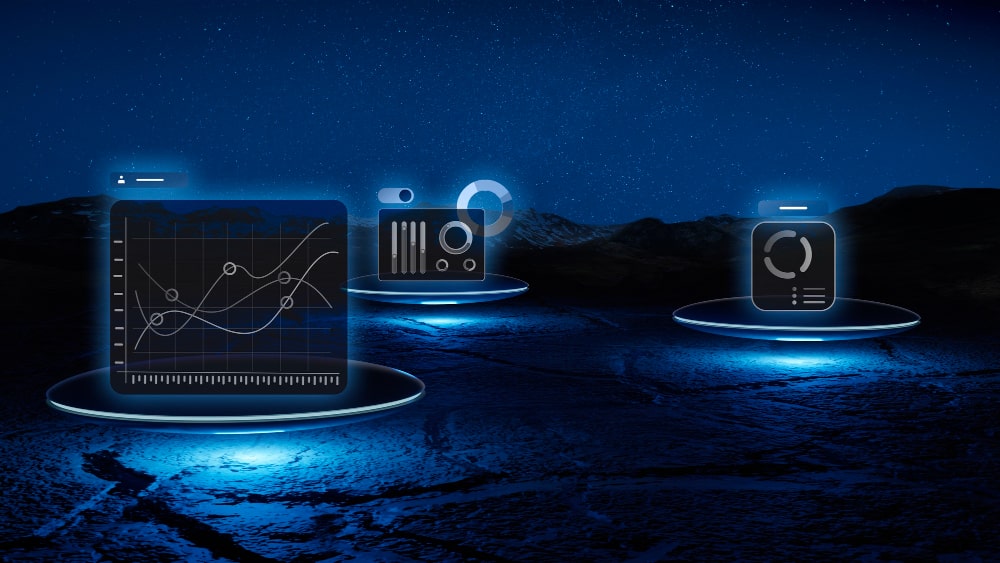Table of Contents
- The Growing Need for IoT and Real-Time Data in Supply Chain Management
- How Real-Time Insights Improve Efficiency and Customer Experience
2. Understanding IoT and Real-Time Data in Logistics
- Definition and Importance of Real-Time Data
- Role of IoT in Supply Chain Operations
3. Key Benefits of IoT in Supply Chain Management
- Increased Transparency
- Improved Efficiency
- Cost Optimization
4. Applications of IoT and Real-Time Data
- Returnable Assets Monitoring
- Real-Time Inventory Tracking
- Real-Time Visibility with Blockchain Integration
- How Prescience Decision Solutions, a Movate company Helped an Online Marketplace Optimize
Their Supply Chain
The global economy is moving faster than ever, making the integration of the Internet of Things (IoT) and real-time data essential for modern logistics and supply chain management. Businesses are struggling to keep up with growing challenges and consumers higher expectations. IoT and real-time data are a relief in tracking, managing, and delivery of goods on time.
Businesses can get real-time visibility into various aspects of the supply chain—from shipping containers to warehouse management by embedding sensors like GPS sensors, RFID, temperature sensors, proximity sensors, and so on. This real-time data enables businesses respond to unexpected disruptions, and route optimization, thus enhancing customer experience.
In this blog, we will explore the benefits and various applications of real-time data and IoT sensors in logistics and supply chain management.
Understanding IoT and Real-time data in Logistics and Supply chain Management
Supply chain management requires real-time data to receive streams of information from different sources like GPS, sensors, and RFID tags. It provides live tracking of inventory levels, freight movement, and delivery status that helps businesses make quick and informed decisions. Additionally, IoT is a critical component, that enables real-time insight via connected devices and sensors. For example,
Smart Sensors: Sensors with IoT capabilities in warehouses, fleets or distribution centers give visibility to temperature fluctuation, humidity, location, and movement of goods.
Automated data capture: IoT handles data collection with zero human interference, real-time monitoring, thus improving decision-making.
Some of the benefits of IoT in supply chain management are;
Increased Transparency: Real-time data and IoT tracks entire goods in transit for an end-to-end supply chain visibility. This provides better monitoring and increased transparency.
Improved Efficiency: IoT sensors and real-time data eliminate manual intervention by automating processes quickly and accurately.
Cost Optimization: Real-time insights provide better utilization of fuel with optimized route planning, leading to less waste, and cost reductions across logistics and operations.
Applications of IoT and Real-Time Data in Logistics and Supply Chain Management.
- Returnable Assets Monitoring
IoT based returnable asset(reusable items) monitoring systems for supply chain management help track reusable shipping components (i.e. containers, pallets & crates) in real-time. Assets are monitored in different locations and regions using GPS, RFID and sensor technologies; to ensure that they are not straying from their path.Additionally, IoT sensors track movement to detect theft or misuse by location, vehicle (or transporter) and vendor. For example, if a truck takes the wrong route, the system flags it as a theft/misuse, and the organization can quickly take the necessary action. - Inventory tracking
IoT based real time inventory tracking provides end-to-end visibility to raw materials, work-in-progress and finished goods. Iot sensors monitor the inventory across all the locations, providing an accurate picture of stock utilization and warehouse space. This real-time data allows demand forecasting, and better stock management. Furthermore, sensors monitor the live location and inventory management worldwide, enabling immediate and proper action in the event of theft or misuse. This enhances the accuracy, reduce waste, and bolsters supply chain reliability. - Real-time Visibility
Real-time visibility is the key to tackle the complexities of modern supply chain management. IoT devices track the status of in-transit products, dispatch them to the right locations, and provide real-time data for all stake holders. This data is further combined with blockchain, to ensure transparency, and helping everyone to collaborate smoothly. In addition, data from third parties (e.g, weather or traffic) enhances the system’s ability to predict accurately, thereby helping enterprises act proactively against sudden demand shifts.For example, a retail company can handle shipment delay caused by temperature fluctuations by rerouting the shipment to safer area. This is achieved by enabling IoT sensors and GPS trackers which monitor shipments in real time to ensure product quality and on-time delivery.
Real-life Example
A large online marketplace with 1.9 billion listings and 132 billion active users found difficulty in expanding their new international shipping program from the US to the other international locations. Also, they wanted to optimize their supply chain processes to handle the increased shipping volumes.
The team at Prescience Decision Solutions, a Movate company provides an analytical solution by analyzing export volumes, seller behaviors, and potential revenue growth. The team used phased ramp-up models for gradually migrating sellers in two groups—current exporters and future exporters. This helped the company to improve logistics and track real-time data. Moreover, this real-time data and IoT sensors allowed the company to monitor exports and boost revenue growth.
Conclusion
Both IoT sensors and real-time data are transforming the way logistics and supply chain management works. It helps businesses to monitor reusable asset movement, route optimization, and improve visibility across various locations. Compared to traditional methods, businesses do not require guesswork to make decisions but can depend on real-time data. As supply chain industry is growing, integrating IoT and real-time data will enhance customer experience and help stay ahead in the competitive market.
At Prescience Decision Solutions, a Movate companys, we offer complete data solutions that integrate artificial intelligence and machine learning across various services like analytics, business intelligence, data engineering, and more.
Moreover, we offer comprehensive supply chain and logistics analytics services designed to boost efficiency of operations across the entire value chain— from procurement and manufacturing to transportation and logistics.
Discover successful customer stories here.

Prescience Team



